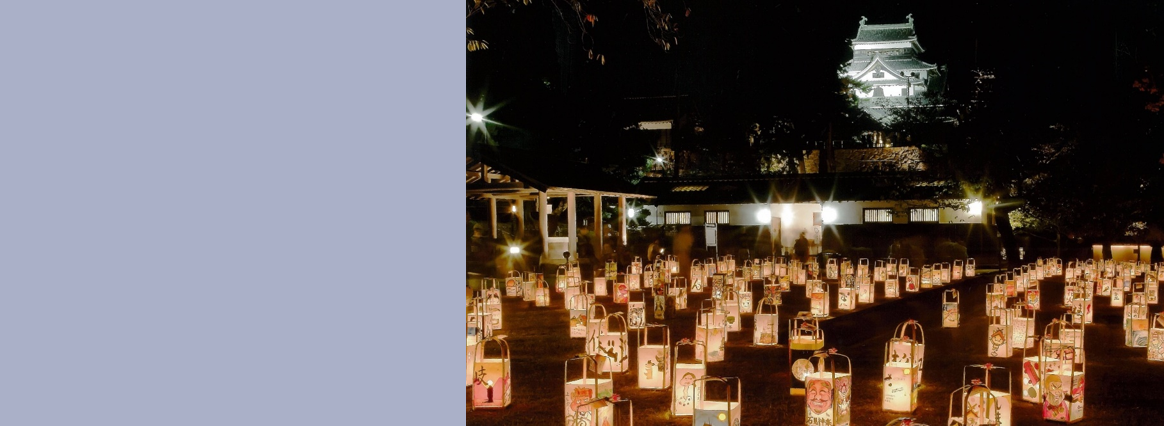Tour Information
Matsue City Centre:
Please visit the website for complete information
https://www.visit-matsue.com/discover.
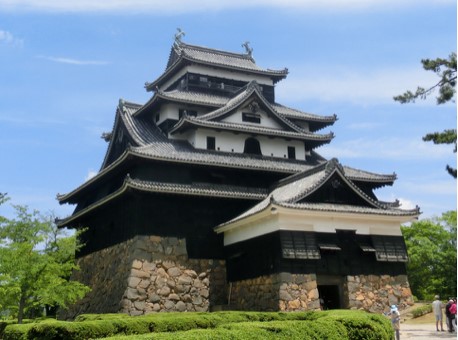
|
Completed in 1611 and one of only 12 remaining original
castles nationwide, Matsue Castle was built over a five-year period by
Horio Yoshiharu, feudal lord and founder of Matsue. It was designated as
a national treasure in 2015. The elegance of the castle's swooping roofs and decor is often compared to the wings of a plover bird ('chidori'), which has led to the castle's nickname, Plover Castle ('chidori-jo'). There is a museum inside, and the top floor offers a panoramic view of the castle grounds and the city. |
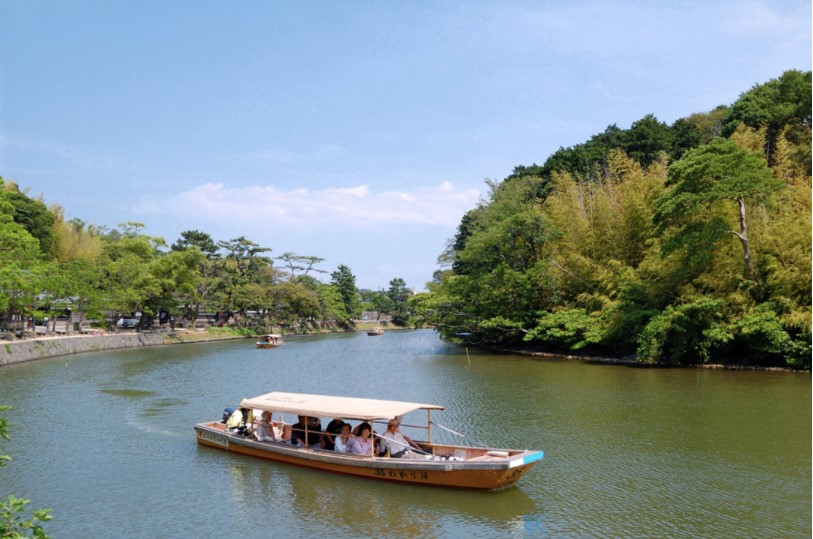
|
This boat tour circles the castle's historical inner and outer moats, passing points of interest which you may not see otherwise. The boat also passes under particularly low-built bridges from time to time, meaning the passengers need to duck down as the roof lowers. Kotatsu heaters are placed in the boat during winter and passengers can literally experience the "warmth" of Japanese tradition. |
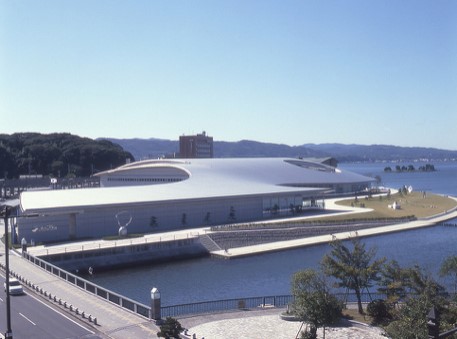
|
This art museum opened in 1999 and was designed by Kiyonori
Kikutake, a prominent Japanese architect known as one of the founders of
the Japanese Metabolist (architectural movement) group. It was built to
look like a painter's palette, and looks also like the setting sun. The art museum houses collections of western and Japanese paintings, print, sculptures, modern art, photography, and crafts. Situated on Lake Shinji's shore, Shimane Art Museum is one of the best spots for enjoying the beautiful sunsets. |
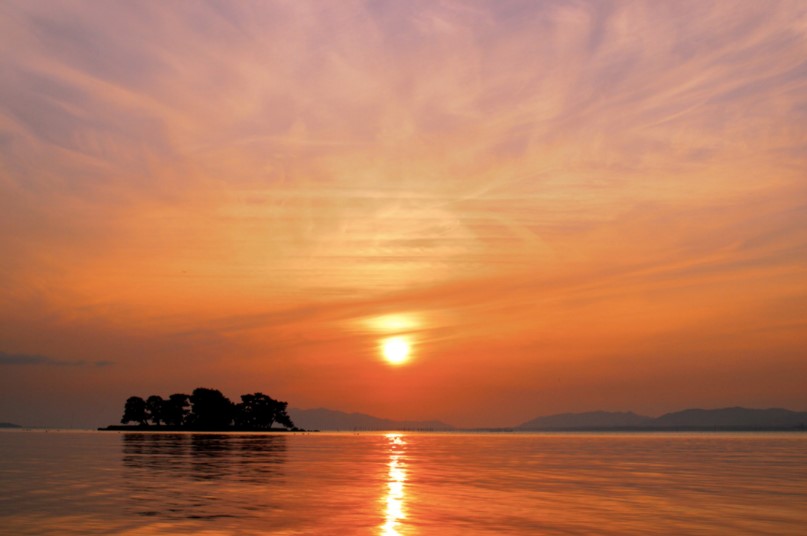
|
Central Matsue is a great spot to watch Lake Shinji's
magnificent sunsets. This view has been included in Japan's list of one
hundred best sunsets, and it's not hard to see why, as the colours not
only change over the final fleeting moments of daylight, but also vary
in time over the changing seasons. We recommend watching it from anywhere along Shirakata Park, from the Shimane Art Museum or the sunset viewing spot, which is located south of the museum along the lakefront promenade. From there, you can enjoy the closest view of the petite island of Yomegashima. |
Outer Matsue:
Please visit the website for complete information
https://www.visit-matsue.com/discover.

|
Designated as an Important National Cultural Asset, Sada
Shrine has the rare characteristic of being composed by three
Taisha-tsukuri style halls, the same style of architecture as Izumo
Taisha Grand Shrine. Taking its name from Sada-no-okami, protector of the northern Shimane Peninsula, the shrine is dedicated to twelve deities, among which are the most important ones of Shintoism - the couple that created Japan, Izanagi and Izanami, and their children, Amaterasu and Susanoo. |

|
Though access by public transportation is limited, the small
historic harbour of Mihonoseki is well worth a visit. Mihonoseki
flourished as a port for Kitamae-bune ships carrying goods to places
like Osaka and Tokyo during the Edo period. Mihonoseki has also been an
important connecting point between Japan and the Asian continent. Surrounded by an abundance of nature and offering a wonderful view of Mt. Daisen, Mihonoseki remains just as Lafcadio Hearn described it many decades ago. Read the following articles to learn more about this small harbour town. |
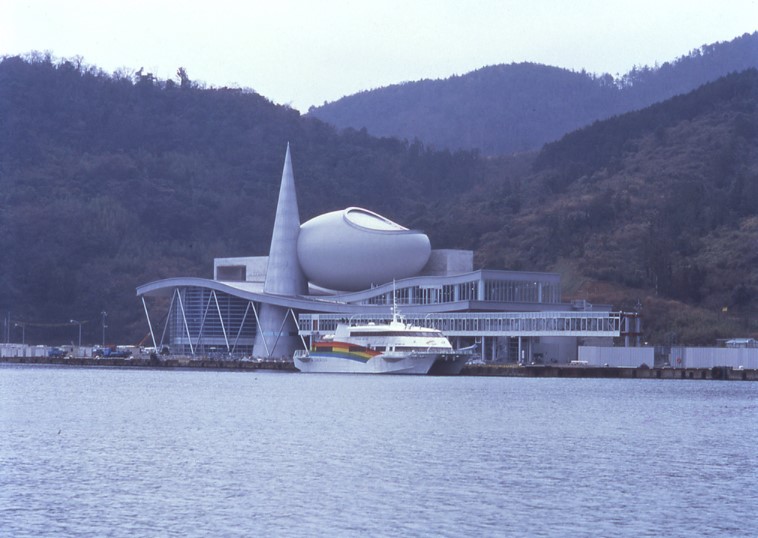
|
Located on the northern side of the Shimane Peninsula, Shichirui Port gives you access to the Oki Islands via daily ferries. It is also home to the Meteor Plaza, which displays a meteorite which fell through the roof of a nearby private residence in 1992. The meteorite is 25.2 cm in length and weighs 6,380g. There is also a sea water pool with sauna, a restaurant, and performance hall. |
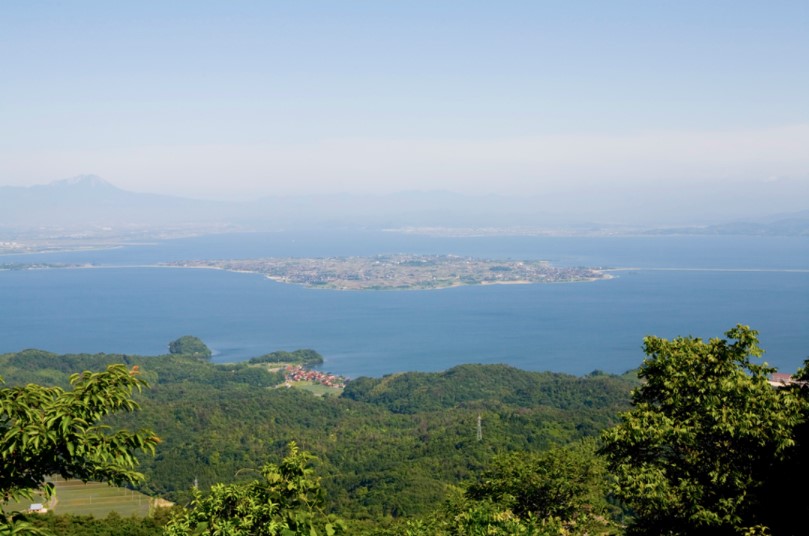
|
Lake Nakaumi is the fifth largest lake in Japan. Connected
to the Sea of Japan via the Sakai Channel and to Lake Shinji through
Ohashi River, it is a brackish lake with abundant wildlife. Its two main
islands, connected by bridges and roads, are Daikonshima and Eshima. The little Eshima Island is connected to Tottori Prefecture with a rigid frame bridge culminating at 45m above sea level, providing a vista-point for a majestic view of Mt Daisen. Lake Shinji and Nakaumi together are designated as Ramsar Convention Wetlands of International Importance since 2006. |
